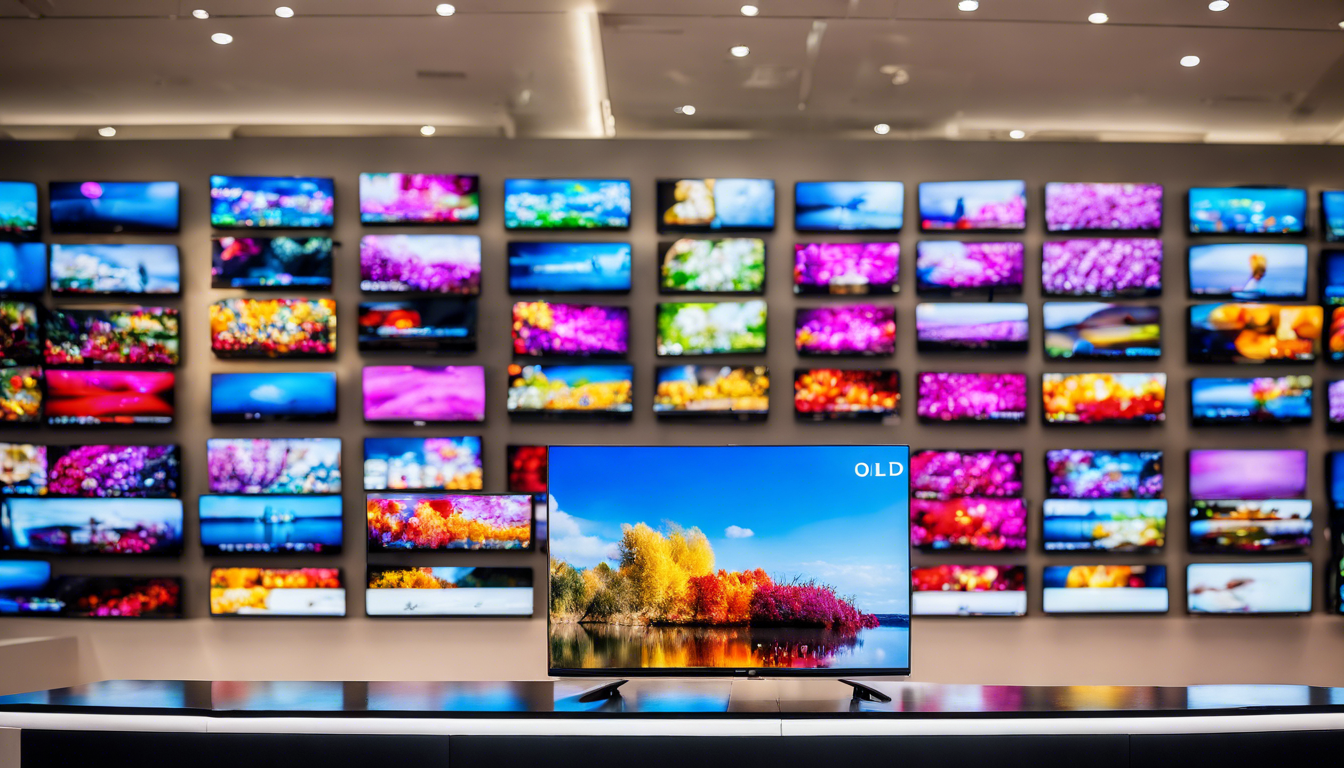OLED technology has revolutionized the television market, bringing unprecedented blacks and vibrant colors that make images leap off the screen. As 2023 unfolds, several models stand out in the market, offering a variety of features that cater to different preferences and budgets. This comprehensive review will delve into the standout OLED smart TVs of the moment, their specifications, benefits, and the inherent cons of each, along with their pricing and warranty details.
Starting with LG’s latest model, the LG CX OLED, renowned for its incredible picture quality and AI-enhanced processing, the TV is not only a viewer’s delight but also a gamer’s dream. Equipped with NVIDIA G-SYNC and FreeSync, it offers a sublime gaming experience. But what sets it apart in the OLED market is its price accessibility compared to its high-end features. The LG CX is available in various sizes, and the cost generally starts around $1,500 for the 55-inch model, extending up to $2,500 for the larger 77-inch. LG offers a standard warranty of 1 year which can be extended with additional coverage.
Sony steps up with its A8H series, featuring the X1 Ultimate processor. Known for its exceptional motion handling and acoustic surface audio technology where the screen itself is the speaker, the Sony A8H transforms how viewers experience television. However, the premium for Sony’s engineering is reflected in its price, typically starting around $1,800 for the 55-inch model. Sony provides a similar one-year warranty but has been reported to have a more responsive customer service, which many users find valuable.
Samsung, traditionally known for its QLED technology, has recently introduced its line of OLED TVs, with the Samsung S95B leading the charge. The model boasts an impressive AI-enhanced Quantum Processor and an exclusive Quantum HDR capability that promises a spectacular viewing experience. Prices for this model start at around $2,200, making it one of the more expensive entries in the OLED sector. Samsung offers a comprehensive 10-year screen burn-in warranty, a testament to their confidence in their OLED technology.
Vizio’s OLED55-H1 is a model that offers great value for those on a budget. Priced at around $1,200, it’s the most affordable option in this list. While it may not compete with the giants in terms of features and enhancements, it offers a detailed, colorful picture quality that is hard to beat at this price point. The warranty for Vizio’s OLED includes a 1-year parts and labor, which can be extended for up to 2 additional years.
Each of these models has its strengths, such as LG’s balance of price and performance, Sony’s superb sound technology, Samsung’s cutting-edge quantum features, and Vizio’s budget-friendliness. Nonetheless, there are drawbacks; for instance, the risk of burn-in—an issue where images are permanently marked onto the screen—is more prevalent in OLED TVs compared to LCD/LED models. While manufacturers like Samsung offer extensive warranties to combat this fear, it remains a consideration for potential buyers.
Aside from technical specifications and warranty details, potential buyers should also consider the smart features offered by these TVs. All models mentioned support popular streaming services directly out of the box and include voice control via platforms such as Google Assistant and Amazon Alexa, adding to the ease of use for consumers.
In terms of after-sales service, the responsiveness and support provided by the company can be crucial. As per user reviews, Sony and Samsung generally lead the market with their customer service, which is something past buyers have praised consistently. Access to quick, supportive service can alleviate some of the common concerns associated with high-end technology investments like OLED TVs.
Price-wise, while OLED TVs generally cost more upfront, their longevity and the unparalleled viewing experience they offer justify the investment for many. Additionally, the market has seen a gradual decrease in OLED TV prices as the technology becomes more mainstream and production processes improve.
Historically, the adoption of OLED technology in TVs can be traced back to advancements made in the early 2000s, with companies like Sony pioneering the first OLED TV. Since then, the technology has seen substantial evolutions, with improvements in lifespan, energy efficiency, and color accuracy, making them a favored choice among consumers seeking superior picture quality.
To conclude, when choosing an OLED TV, it’s essential to weigh the price, features, warranty, and customer service reputation of the brand. Whether it’s the feature-rich LG CX, the sonically superior Sony A8H, the quantum brilliance of the Samsung S95B, or the economical Vizio OLED55-H1, the market offers compelling options for everyone.

